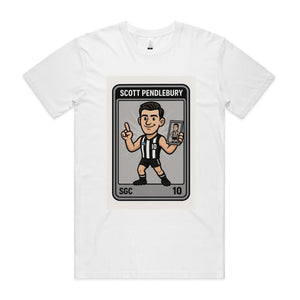How to Buy and Sell NBA Cards for a Profit
Table of Contents:
-
Introduction to the NBA Card Market
-
Why NBA cards are valuable
NBA trading cards are valuable due to their strong collector base, historical significance, and potential as an investment. The market operates similarly to stocks, where card values fluctuate based on player performance, demand, and scarcity. Limited edition and rookie cards can appreciate significantly over time, making them a popular choice for investors and hobbyists alike. -
The history and evolution of NBA cards
The NBA trading card industry dates back to the 1940s, with brands like Bowman and Topps leading early production. Over the decades, companies like Fleer, Upper Deck, and Panini revolutionized the market with innovations such as autographed cards, jersey patches, and serial-numbered editions. Understanding this evolution helps collectors recognize valuable vintage cards and emerging trends in modern releases. -
Understanding the demand for NBA trading cards
Demand for NBA cards is driven by multiple factors, including player popularity, team success, and market trends. Some collectors seek cards for nostalgia, while others invest for profit. The rise of social media, digital marketplaces, and influencer hype has further fueled demand, making it essential for buyers and sellers to stay informed on market trends and player performances.
-
-
Understanding the Different Types of NBA Cards
-
Base cards vs. parallel cards vs. inserts
-
Base cards: These are the standard cards in a set, featuring common players and widely available. While they are an entry point for new collectors, they usually hold lower value unless the player becomes a superstar.
-
Parallel cards: These are variations of base cards with different colors, foil finishes, or serial numbering, making them rarer and more valuable.
-
Inserts: Specially designed cards with unique themes, sometimes featuring limited print runs, autographs, or holographic designs. Popular inserts from iconic sets often have long-term value.
-
-
Rookie cards and their significance
Rookie cards (RCs) are the first official cards of a player in an NBA set, making them highly sought after. The value of an RC depends on the player's career trajectory. Investing in the right rookie cards—especially those of future superstars—can yield significant returns. -
Autographed and memorabilia cards
These premium cards contain player autographs or game-worn jersey swatches, making them highly desirable. Autographed cards are often numbered and come in sticker or on-card variations, with the latter being more valuable. Memorabilia cards featuring patches from game-used jerseys are also collectible, especially if they contain multi-color or logo patches. -
Graded vs. raw cards
-
Raw cards: Uncertified cards that may have imperfections. Their value depends on their condition and the buyer’s assessment.
-
Graded cards: Professionally authenticated and rated on a scale (e.g., PSA 1-10, BGS 1-10). High-grade cards command premium prices due to their verified condition. Collectors and investors prefer grading to ensure authenticity and long-term preservation of value.
-
-
-
How to Identify Valuable NBA Cards
-
Key player cards to look for
-
Rising stars vs. established legends
Identifying key players is crucial for maximizing profits. Established legends like Michael Jordan, LeBron James, and Kobe Bryant have consistently high-value cards due to their iconic status. Rising stars, on the other hand, can offer significant short-term and long-term gains if they perform well. Tracking young players' progress and investing early can lead to major payoffs. -
Hall of Fame potential and its impact on value
Players with strong careers and statistical achievements are likely to make the Hall of Fame, which can lead to increased demand for their cards. Investors should look at players with long-term consistency, multiple championships, or MVP awards as future Hall of Fame candidates.
-
-
Short prints and serial-numbered cards
-
How rarity affects pricing
The rarer a card, the higher its potential value. Short-printed cards (SP), serial-numbered cards (e.g., /10, /99), and case-hit cards (one-per-case inserts) are highly sought after due to their limited availability. Understanding print runs and rarity can help buyers make informed investment decisions. -
Identifying serial-numbered, case-hit, and exclusive releases
Serial-numbered cards have a printed limit (e.g., 1/25 means only 25 exist). Case-hit cards are ultra-rare inserts found once in multiple boxes or cases. Exclusive releases, such as National Treasures or Flawless, contain premium limited-edition cards that hold long-term investment value.
-
-
Trends in player performance and hype cycles
-
Understanding preseason hype vs. postseason demand
Players often see value spikes during preseason and playoffs. Buying during the off-season when interest is low and selling when demand is high can maximize profits. Monitoring team performance and player development helps predict these market cycles. -
How social media and endorsements influence value
Social media, highlight reels, and endorsement deals can create major hype around a player. Viral moments, game-winning shots, or signing with a big brand (Nike, Adidas) can quickly increase demand for a player's cards. Staying updated on social media trends is essential for identifying quick investment opportunities.
-
-
Examining historical sales data
-
Using eBay sold listings and market tracking tools
Checking completed eBay sales provides real-time insights into a card’s value. Market tracking platforms like Market Movers and Card Ladder allow investors to monitor trends, identify undervalued cards, and track historical price movements. -
The importance of price comparison before buying
Comparing prices across multiple platforms (eBay, Facebook, Instagram, auction houses) ensures buyers get the best deals. Avoid overpaying by researching past sales and current listings before purchasing.
-
-
-
Where to Buy NBA Cards
-
Retail stores vs. hobby shops
-
Pros and cons of each buying method
Retail stores (e.g., Target, Walmart) offer convenience but often have limited selections and high competition for packs. Hobby shops provide a broader selection, expert advice, and exclusive high-end products, though prices can be higher. -
Differences in availability and exclusivity
Retail stores usually carry lower-end products with mass production, whereas hobby shops offer exclusive boxes, autographs, and serial-numbered cards.
-
-
Online marketplaces (eBay, Facebook Groups, etc.)
-
How to safely buy cards online
Buyers should check seller ratings, request high-quality images, and use secure payment methods (PayPal Goods & Services) to avoid scams. Reading descriptions carefully helps prevent purchasing damaged or counterfeit cards. -
Tips for spotting deals and avoiding scams
Setting up eBay alerts, negotiating in Facebook Groups, and tracking recent sales trends can help buyers find undervalued cards. Avoid sellers with vague descriptions or stock images, as they may be misleading buyers.
-
-
Card shows and local card shops
-
Negotiating prices in person
In-person transactions at card shows and local shops allow buyers to inspect cards firsthand and negotiate deals. Vendors may offer discounts for bulk purchases or cash payments. -
Finding rare cards and networking with collectors
Card shows are great opportunities to discover rare cards, meet fellow collectors, and gain insights into market trends. Building relationships with dealers can lead to future investment opportunities.
-
- If you’re serious about buying, grading, and selling cards for profit, check out The Ultimate Guide to Card Grading—our expert eBook covering everything you need to know to make money in the trading card industry!
-





Share and get 15% off!
Simply share this product on one of the following social networks and you will unlock 15% off!